Activities of the Franciscans
The Franciscans were concerned with the continued exodus of Christians from Palestine and other regions of the Middle East.
Christians left the region because of various reasons. They were fleeing because their neighbors were hostile. Moreover, other reasons such as poverty, diseases, and suffering forced them to move to another place.
There was no one to take care of them. They considered themselves orphans in a region that was extremely hostile to them. They needed a place they could call home.
The Franciscans came to their rescue. They came to the realization that these people needed urgent help not only to stop their movement from this region, but also to encourage them and provide basic needs that they would require from time to time (Theissen 129).
This foundation strongly supports Christians around this volatile region bringing various incentives to cater for the needs of the faithful. The organization comes with clothes, food, and many other materials for these people. The actions of the organization have seen lives of many of faithful transformed. They have also been fighting for the rights of the Christians in this country.
They have worked hard to protect the fundamental freedoms and rights of Christians in Palestine and other regions in the Middle East.
This organization has received massive support from many churches in the United States of America and other parts of the world.
Some of the churches that have strongly funded the operations of this foundation include the Catholic Church, the Anglican Church and the Lutheran churches around the world. Other agencies have also come out to support the activities of this organization.
Efforts of the Franciscans in Excavating the City of Capernaum
Besides their efforts to ensure that Christians in Palestine are provided with basic needs, the Franciscans have endeavored to prove to the world that Palestine is home to Christians. Its main aim is to preserve some of the historical sites where Jesus started his ministry. The sites are also a reminder of the efforts made by the followers of Jesus after his death . This is aimed at ensuring that the word of God is spread to the rest of the world, despite numerous challenges and threats faced in this process (Charlesworth 172).
This activity would also emphasize the fact that Christians in this region have all the rights because it is their ancestral land.
These sites would give Christians the moral authority to feel that they are at home and that no one has the right to tell them otherwise.
One of the sites that Franciscans have discovered is the synagogue at Capernaum. The figure below shows the synagogue.
The figure shows a strong architectural structure ,which has lasted for over two centuries. Although it is worn out due to withering and other human activities, the structure is still exceptionally clear in its design.
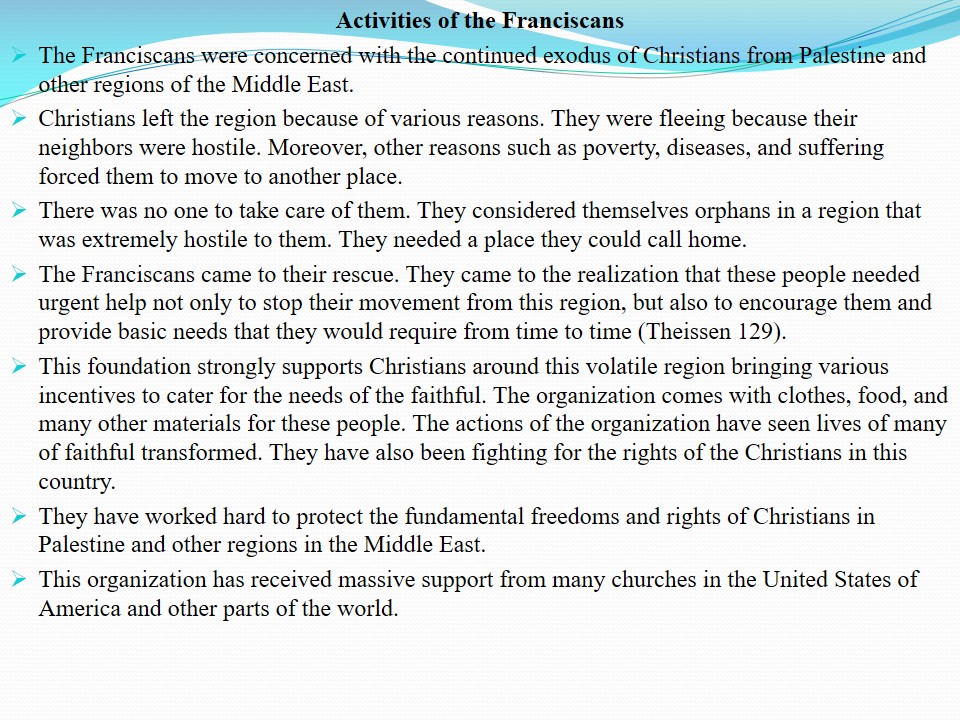
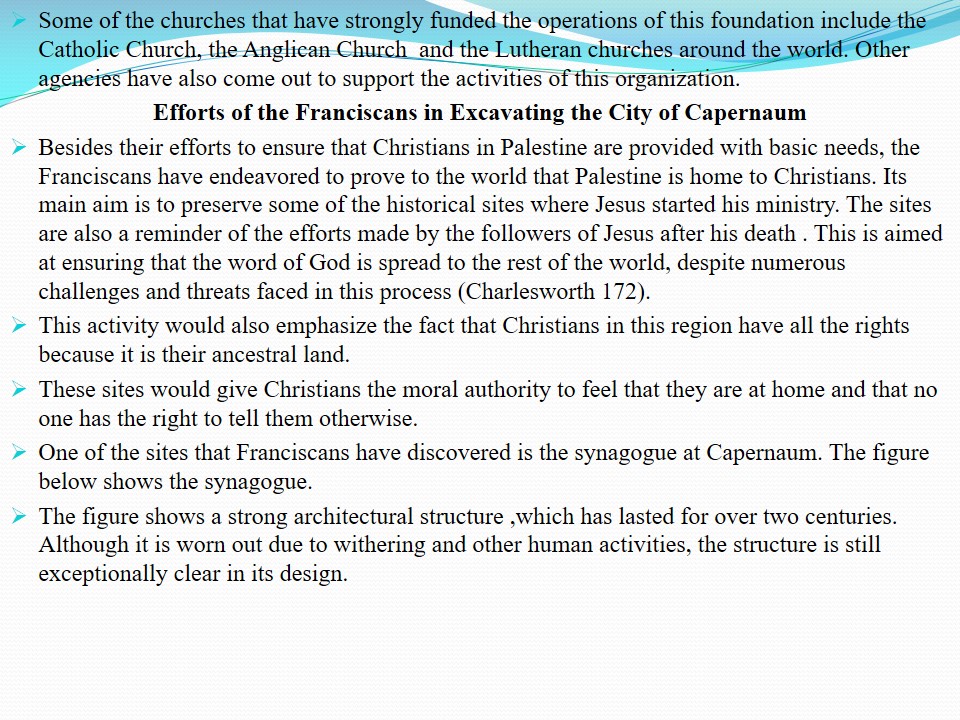
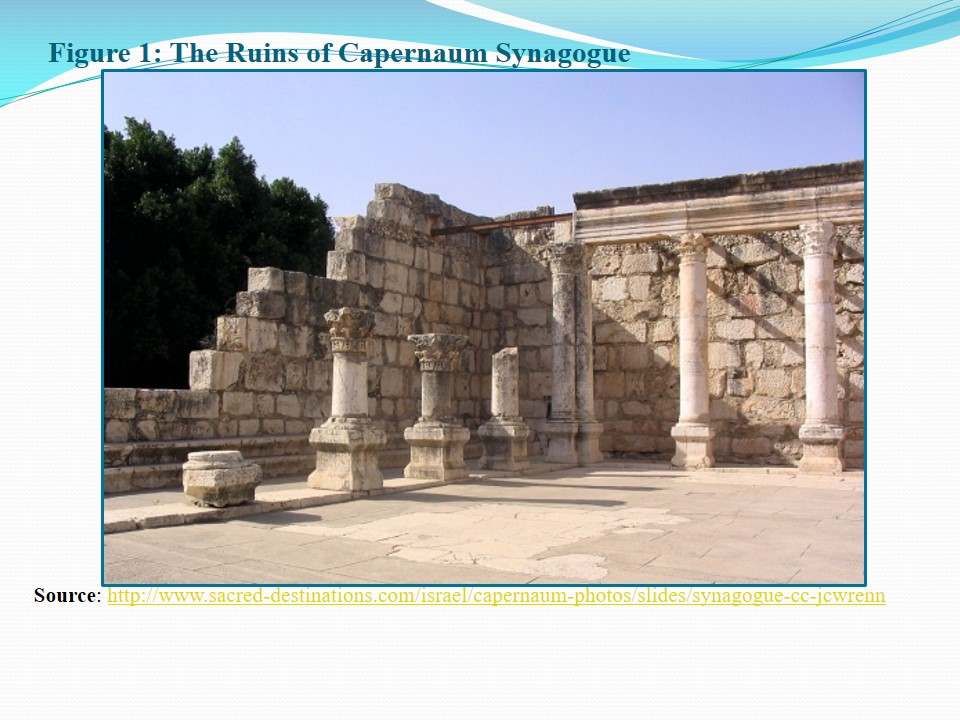
The figure below shows the side view of the above structure. It shows how strong this ruin, and how well its foundation was laid. It is a clear demonstration that the current architectural designs borrow from the ancient designs.
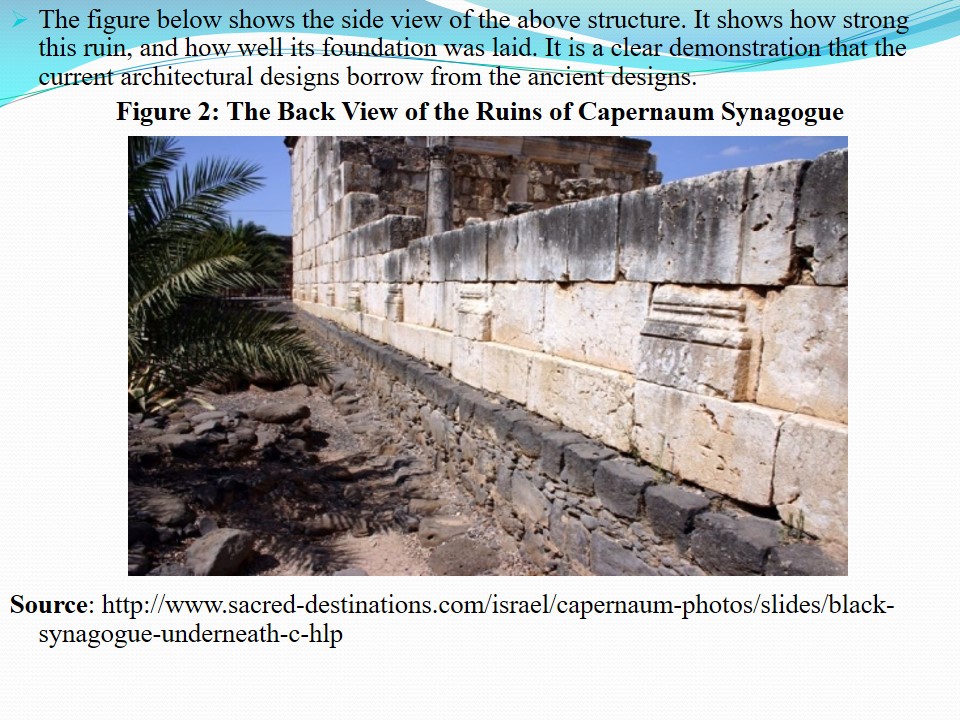
It was strongly believed that Apostle Peter lived in this city with his family before joining the ministry of Jesus. They have managed to discover the house where Peter lived. The figure below shows the house of Peter.
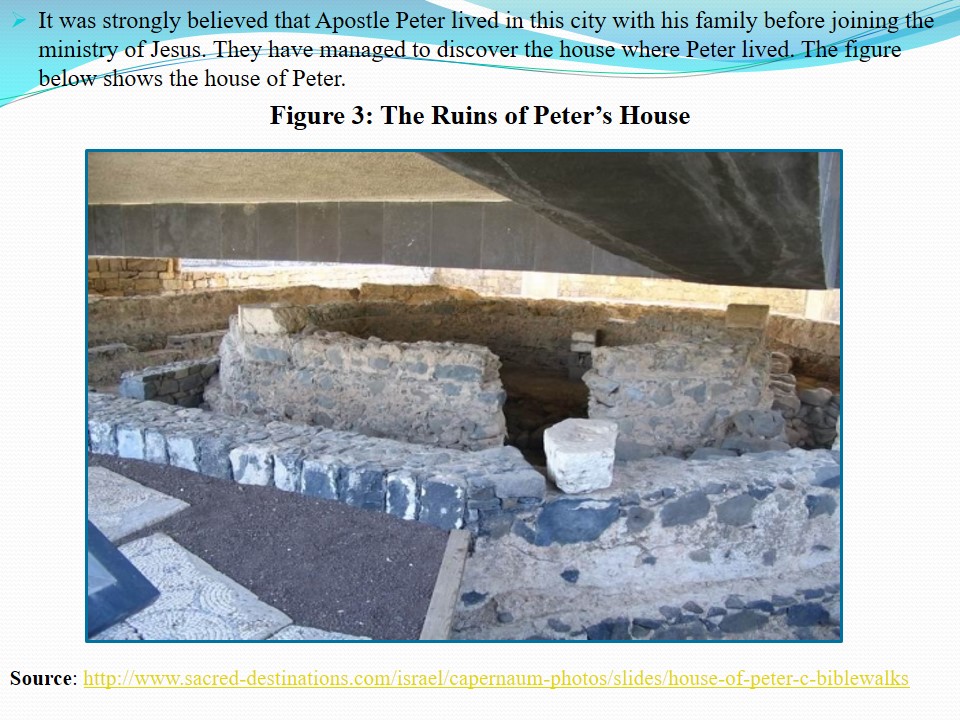
Architectural Designs
The octagonal shape of the house supports the above argument that the architectural designs were advanced and that the rich built beautiful houses. This house also shows that Peter and Andrew were not poor. For Peter to be able to build such a house, he should have had the finances to put up the same.
The Franciscans were keen to ensure that although they preserved these historical sites, they also built new houses where the faithful could gather for purposes of prayer. Below is a church they built in this region that resembled the traditional synagogue. It was built on top of the ruins of the temple, and the floor was made of glass. This way, it was easier to see the original building beneath the church (Reed 89).
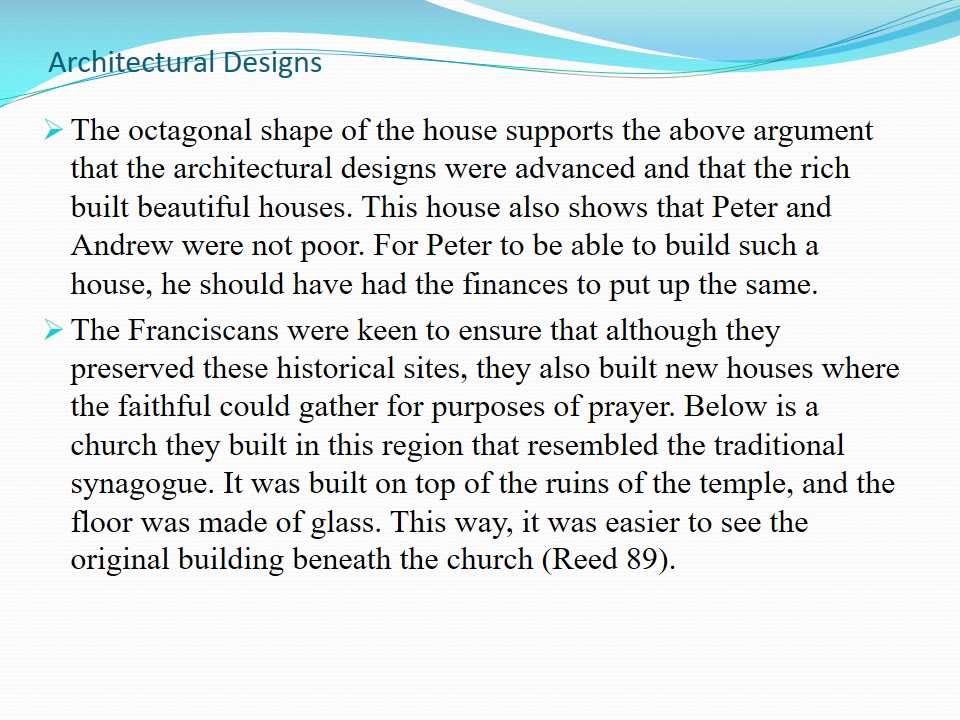
Although the structure looks modern, the above building took the exact design of the synagogue before its destruction. The figure helps in understanding the architectural design of the above house but from an external view.
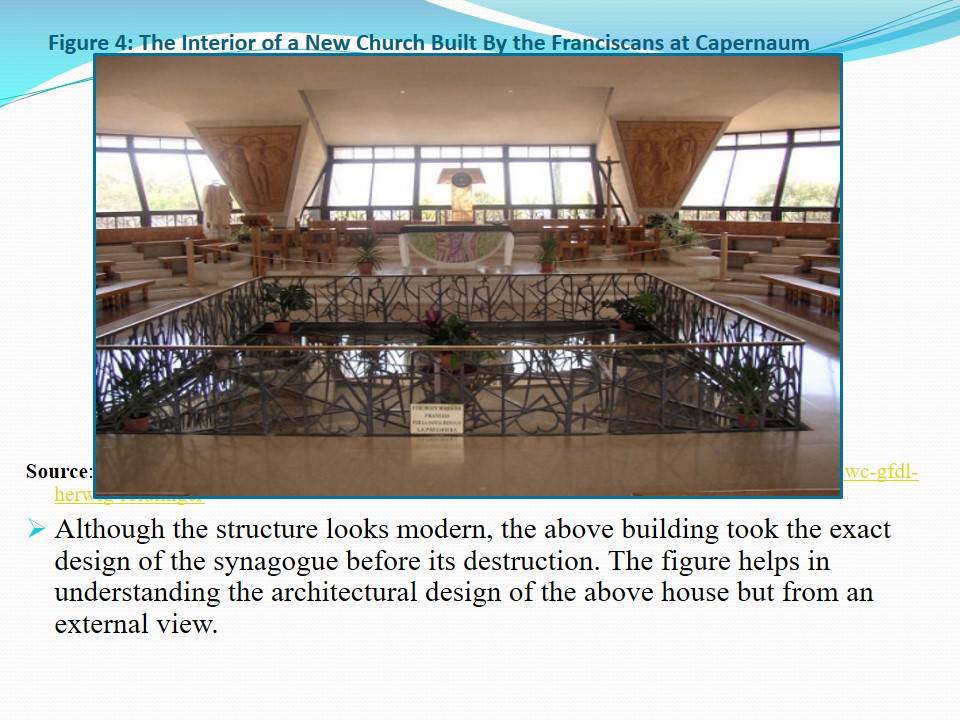
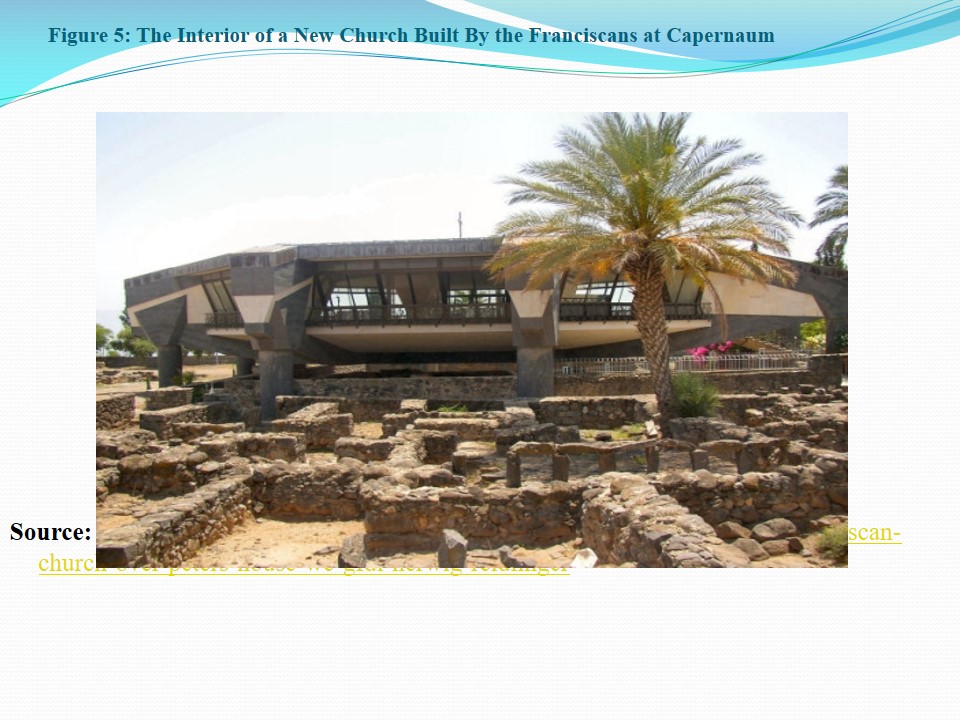
These Christians have also worked tirelessly to discover the place where Jesus was buried. The Bible talks much about the tomb, which is believed to be located in this region. Their work bore fruits when they found a tomb in this region that fits the description of the tomb where Jesus was buried.
The figure below is the tomb believed to have been used in burying Jesus.
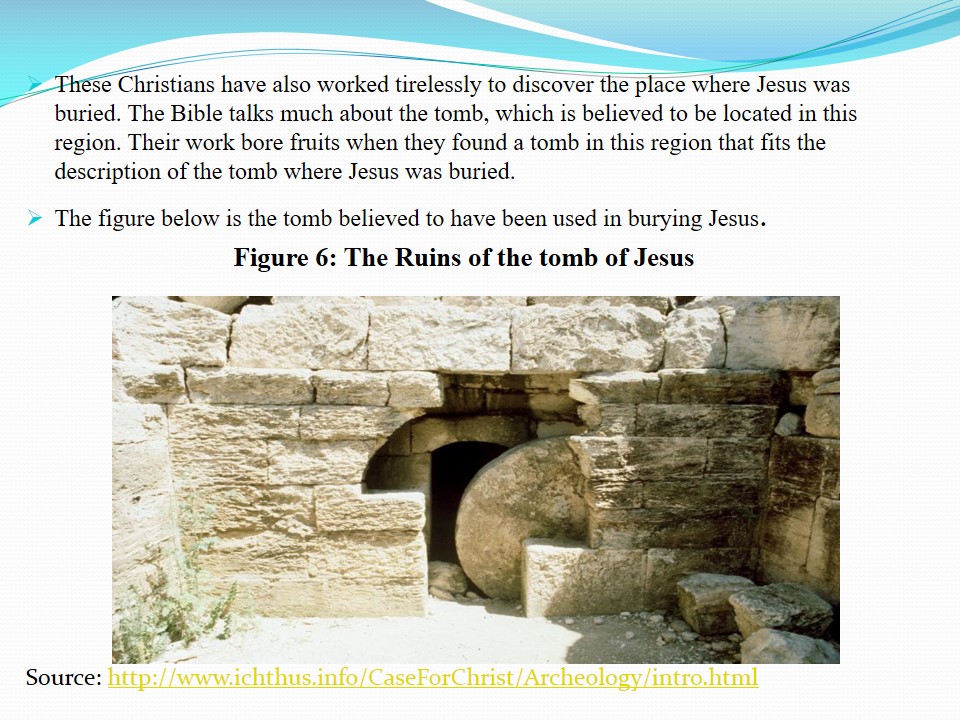
Judging by the tomb, it is true that Jesus was crucified, and his body was taken to the tomb.
It also seeks to explain the fact that Jesus was born in this region, spent most of his time in the region, and was finally buried there.
It is convincing that Christians, just like other individuals staying in this region, have all the rights to live in this area.
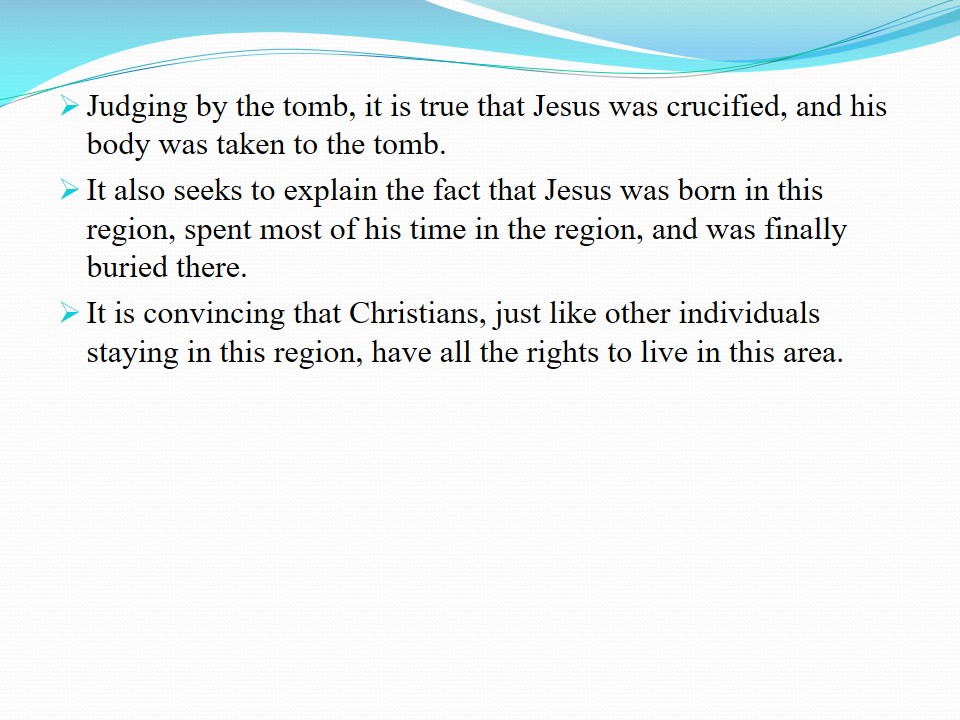
Works Cited
Bockmuehl, Markus N. A. The Remembered Peter: In Ancient Reception and Modern Debate. Tübingen: Mohr Siebeck, 2010. Print.
Charlesworth, James H. Jesus and Archaeology. Grand Rapids, Mich. [u.a.: Eerdmans, 2007. Print.
Reed, Jonathan L. Archaeology and the Galilean Jesus: A Re-Examination of the Evidence. Harrisburg, Pa: Trinity Press International, 2002. Print.
Theissen, Gerd. The Gospels in Context: Social and Political History in the Synoptic Tradition. London: T & T Clark International, 2004. Print.